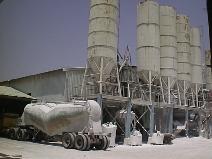
|
|
| A service from Omar |
|
What is calcium carbonate? |
production process |
Saudi Marble co First calcium carbonate plant in Saudi Arabia | ||||
Calcium carbonate, is one of the commonnest mineral combination to be found on Earth. It is estimated that th mineral accounts for as much as 14% of the Earth's crust and is formed in many different geological environments. Calcite can form rocks of considerable mass and constitutes a significant part of all three major rock classification types. It forms oolitic, fossiliferous and massive lime stones in sedimentary environments and even serves as the cements for many sandstones and shales. Limestone becomes marble from the heat and pressure of metamorphic events. Calcite is even a major component in the igneous rock called carbonatite and forms the major portion of many hydrothermal veins. Some of these rock types are composed of better than 99% calcite. |
1-Raw
material: |
Activities and operations: 1-QUARRY: | ||||
 |
The activity is located about 5 Km from the
crushing plant. Several equipment operated by experimented operators are sharing together the extraction of pure white marble rock ; bulldozers, air compressor, pay loaders, excavators, rock breakers and the continuous drilling to keep the blasting constantly reach the target of the production with the care to blast the rock with the minimum blow out.
| |||||
|
Extraction of pure white rock | ||||||
|
2-Crushing plant: |
2-CRUSHING PLANT: | |||||
 |
The crushing plant is located at 135 Km from Jeddah city to
keep a way from residential area. We receive a reselected raw material from quarry, the process of selection will be again carried out on the belt conveyor .After the first and second crushing stage different sizes of marble chips are screened to meet different costumers request. 3 production lines are used to meet all the market requirement. | |||||
| 1st and 2nd stage crushing marble to different sizes to feed the mills | ||||||
| 3-Calcium carbonates grinding | 3-CALCIUM CARBONATE PLANT: | |||||
 |
Coarse calcium carbonate section: This section receives its raw material from crushing plant , after all quality controls and approval from the lab it will be feed to an impact mill to transform the marble chips into powder then goes to special mechanical an air cutting to separate different sizes based on market and international standards witch is refereed as per our references from 75 micron to 800 micron. fine calcium carbonate section: This section is consisting of many roller mills to have different grades of product. Some of the rollers mills are equipped with stocking silo to feed a special air classifiers to make different cutting various from 20micron to 60 micron. Other rollers mills are adjusted to make production from 63micron to 200micron to be packed in jumbo sacks or to be delivered in bulkier to different customers which were supplied by our silos for better easiest stocking and using. | |||||
| roller mill and a special classifiers are used to produce calcium carbonate powder with different sizes , high purity and whiteness | ||||||
| 4-Delivery to costumers | ||||||
 | ||||||
| bulk loader for transporting calcium car |
| The best property of calcite is the acid test.
Why? Because calcite always will effervesce (bubble) when even cold
weak acids are placed on specimens. Even the cement in sandstones
will effervesce assuring the geologist of identification of the
cementing mineral. The reason for the bubbling is in the formula
below:
The carbon dioxide gas (CO2) is given off as bubbles and the calcium dissolves in the residual water. Any acid, just about, can produce these results, but dilute hydrochloric acid or vinegar are the two recommended acids for this test. Other carbonates such as dolomite do not react as easily with these acids as does calcite and this leads to differentiating these somewhat similar minerals more readily.
|